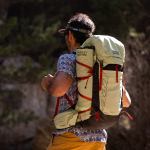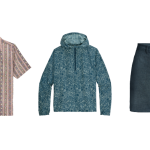By Matt Powell, Vice President, Senior Industry Advisor, Sports – The NPD Group
One thing we know for sure about COVID-19 is that there is so much uncertainty. Will there be a second wave? When will we see a vaccine? How long will the economic aftershocks last? When will folks feel like going to malls again?
We turn to data to help us answer the open-ended questions, and best prepare for the different scenarios that may unfold. From my sports industry perspective, some U.S. consumer behavior and spending patterns are emerging in the data, offering a glimpse into what sports retail will look like as we move through this pandemic. In today’s turbulent times, I’m glad there are some glimmers of positivity.
From a consumer behavior viewpoint, an NPD Checkout survey found that compared to pre-COVID behavior, exercising at home has increased by more than 70% and twice as many consumers are using online or app-based exercise classes. In addition, consumers plan to exercise more after COVID-19 is over. This behavior certainly bodes well for the sports industry.
I expect we will see a renewed and heightened interest in wellness and fitness post-pandemic. In addition to the lockdown providing a greater incentive for people to exercise at home or be active in the open air, I believe this illness has also motivated people to adopt healthier habits. Overall, I expect the combination of these factors to drive an increased interest in healthy lifestyles, which bodes well for sports retail. A survey recently released from our partner CivicScience indicates that more Americans are working out than they were just a few months ago. As an industry, we’ll need to figure out ways to keep them doing so – a blog topic for another day.
From a broader perspective, consumers appear to be embracing brands they can trust. According to CivicScience, brand loyalty has gone up during the pandemic. I think consumers will begin to gravitate even more so to the tried-and-true brands they trust, and I expect that their purchases will become more pragmatic. For example, we may see a shift away from sport lifestyle footwear to a more versatile and multipurpose performance shoe. Running footwear will likely see resurgence.
Looking at consumer spending behavior, the additional $600 unemployment benefit has likely propped up sales in the earlier months of this crisis; however, with that benefit set to expire at the end of July, we can expect softer sales results as the nation slowly gets back to work. On the other hand, consumers who remain employed may have greater discretionary income as they haven’t been spending on planned expenditures such as travel, cultural and sports events, child care and a myriad of other “normal” expenses. This can leave more disposable income for other purchases.
It probably comes as no surprise that e-commerce has been a huge winner during the lockdown. NPD data shows that in April, two-thirds of all athletic shoes sold in the U.S. were sold online. Of course, as stores re-open, this ratio will likely come down, but during the crisis many consumers learned new ways to buy products on the internet. I don’t think those lessons will be unlearned. We can expect retailers and brands with excellent e-commerce platforms to thrive, and the opposite outcome for those that don’t have catchy, user-friendly websites.
In a similar vein, direct-to-consumer activities have kept many brands afloat during the lockdown. I don’t expect we’ll see brands pulling back from this effort going forward. Brands will be more formidable competitors than ever.
As we’ve already started to see in the news, we can expect brand and retailer bankruptcies as we come out of this crisis. There may even be some “strategic” bankruptcies so companies can shed unwanted liabilities. Fewer stores will lead to more e-commerce sales.
We can expect the return to physical retail to be slow and painful. Research conducted by CivicScience found that for customers who like to shop at Academy, 25% say they would be comfortable shopping there in one to four months, and 50% say in more than four months. For customers who like to shop at Footlocker and The Finish Line, about 40% say they will shop there in one to four months, and about 30% say more than four months. Based on the poll, Dick’s Sporting Goods has the most favorable outlook, with about half saying they would shop soon and 30% saying in one to four months. This tells me that the recovery of physical retail will be bumpy.
Blanketing all of this will continue to be social distancing. I suspect this will remain a disruptor going forward – it will change fitness regimes, retail layouts, customer returns, and so much more. Social distancing will be the defining, societal change of the pandemic.
I will share more of my insights and observations as we continue to learn more about the COVID-19 consumer of tomorrow.






